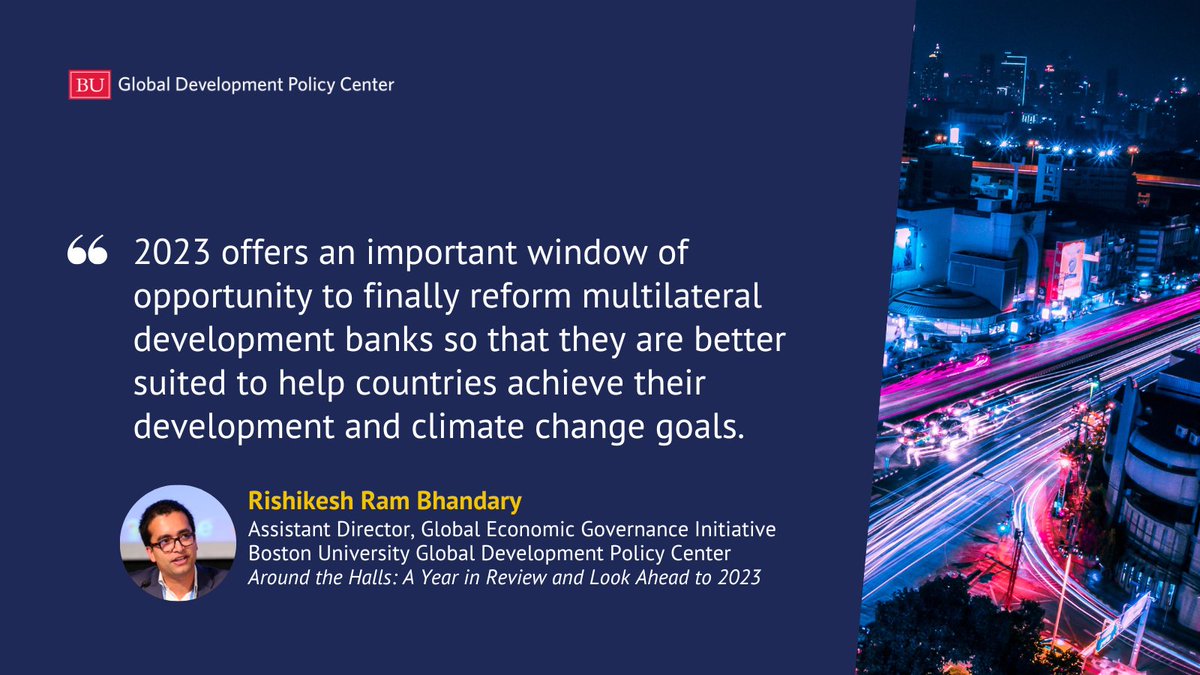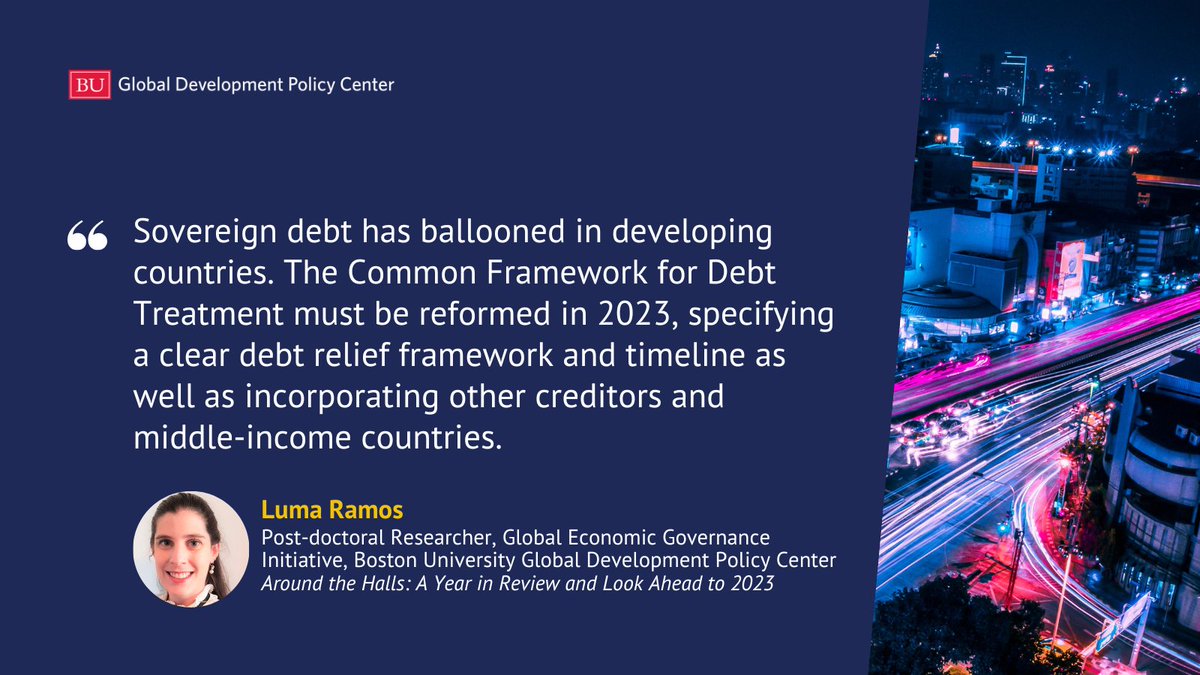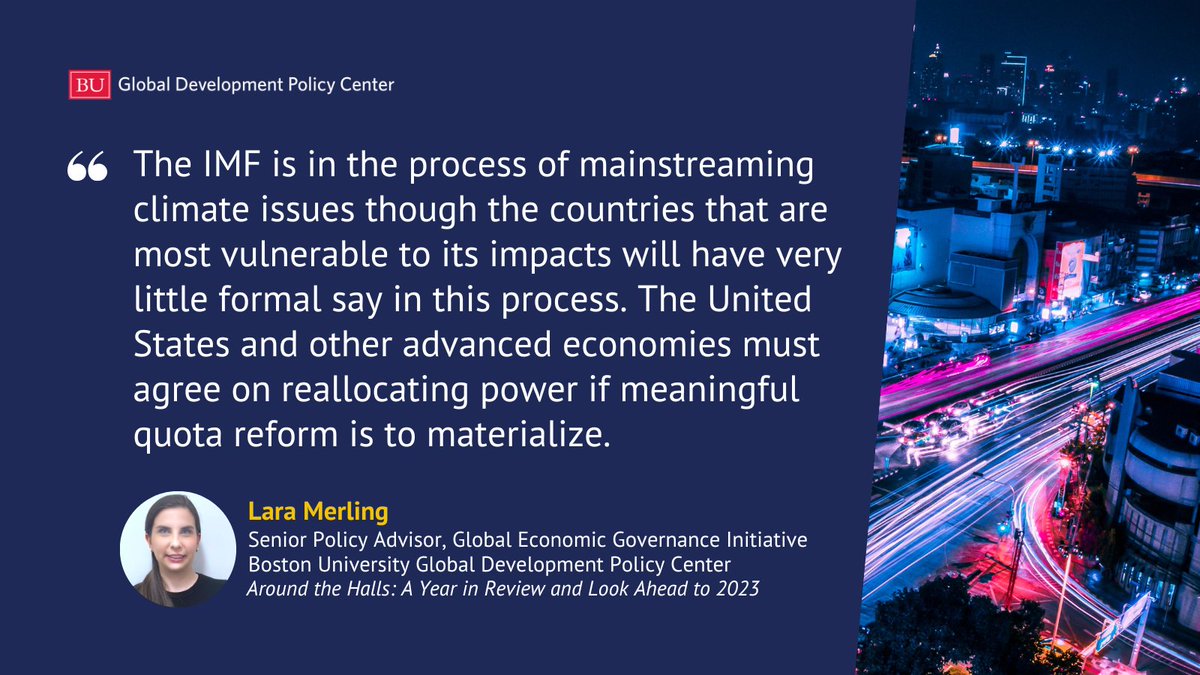As 2022 comes to a close and the world confronts the “polycrisis,” researchers across the GDP Center highlight where progress has been made, where policy movement has stagnated + what to keep an eye on for 2023.
🧵for expert insights ⤵️
gdpcenter.org/2022InReview
🧵for expert insights ⤵️
gdpcenter.org/2022InReview

1️⃣ In October 2022, @SecYellen asked for an evolution roadmap from @WorldBank to make the institution more fit-for-purpose.
@rishirbhandary says a 🔑 component of this is multilateral development banks substantially increasing their firepower.
gdpcenter.org/2022InReview
@rishirbhandary says a 🔑 component of this is multilateral development banks substantially increasing their firepower.
gdpcenter.org/2022InReview

2️⃣ @han_cecilia considers if 🇨🇳China is hitting pause on the green energy revolution as coal remains the largest share of overseas power generating capacity financed by 🇨🇳China.
She says it must scale up support for renewable energy to meet commitments.
gdpcenter.org/2022InReview
She says it must scale up support for renewable energy to meet commitments.
gdpcenter.org/2022InReview

3️⃣ For @MVKarra, it is clear that the ongoing pandemic will only create more barriers to access + exacerbate inequities in healthcare-seeking, particularly in already-strained contexts.
To mitigate them, clear + decisive policy action is needed.
gdpcenter.org/2022InReview
To mitigate them, clear + decisive policy action is needed.
gdpcenter.org/2022InReview

4️⃣ From a lackluster #MC12 to investor-state disputes threatening green transitions, @Thrasher_Rachel reviews how the future of the existing trade + investment regime depends on its ability to adapt + respond to global development + climate needs.
gdpcenter.org/2022InReview
gdpcenter.org/2022InReview

5️⃣ @TarelaMoses examines how China-Africa economic relations are in transition as Chinese loans to Africa decrease.
The Chinese Foreign Minister’s visit to Africa in January may indicate the new direction 🇨🇳China wants to take within African countries.
gdpcenter.org/2022InReview
The Chinese Foreign Minister’s visit to Africa in January may indicate the new direction 🇨🇳China wants to take within African countries.
gdpcenter.org/2022InReview

6️⃣ As #COP15 comes to a close, @BUBeckyRay considers how the new Global Biodiversity Framework could help shape climate finance + set guidelines for development finance institutions in protecting vital ecosystems.
gdpcenter.org/2022InReview
gdpcenter.org/2022InReview

7️⃣ "How can policymakers withstand a polycrisis?" asks @ywang2005b.
She highlights that it is crucial to focus on building public assets + utilizing these assets to either sustain development or survive.
gdpcenter.org/2022InReview
She highlights that it is crucial to focus on building public assets + utilizing these assets to either sustain development or survive.
gdpcenter.org/2022InReview

8️⃣ On debt, @LumaSRamos emphasizes that the looming debt crisis requires action from @g20org on reforming the Common Framework + ambitious, comprehensive solutions that allow developing countries to invest in low-carbon, resilient + inclusive growth.
gdpcenter.org/2022InReview
gdpcenter.org/2022InReview

9️⃣ As @IMFNews mainstreams climate into its operations, climate vulnerable countries have very little formal say in the process due to the quota system.
@LaraMerling writes that the 16th Review of Quotas concluding in 2023 is a 🔑 opportunity for reform.
gdpcenter.org/2022InReview
@LaraMerling writes that the 16th Review of Quotas concluding in 2023 is a 🔑 opportunity for reform.
gdpcenter.org/2022InReview

Read more 🔑 takeaways from 2022 and what to look out for in 2023 in our latest blog ⤵️
gdpcenter.org/2022InReview
gdpcenter.org/2022InReview

Never miss an update by subscribing to the Boston University Global Development Policy Center newsletter:
gdpcenter.org/Subscribe
gdpcenter.org/Subscribe

• • •
Missing some Tweet in this thread? You can try to
force a refresh






